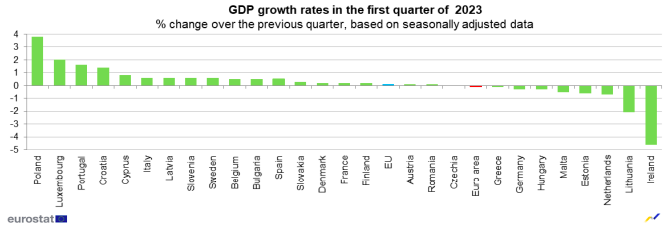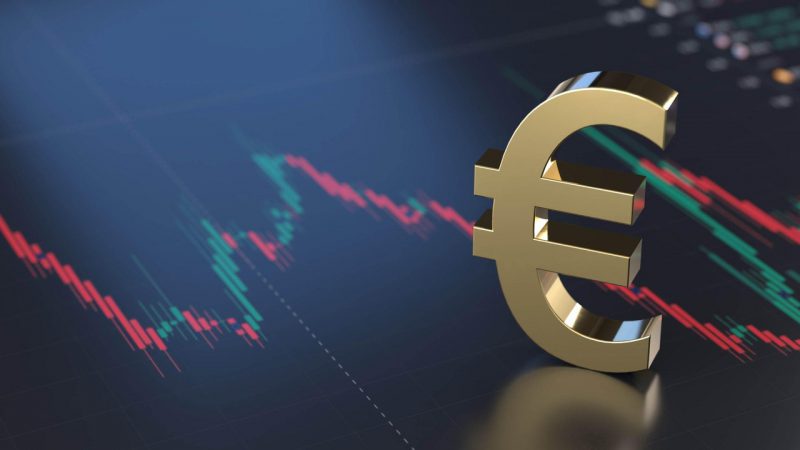The Eurozone has officially entered into its recessionary phase. Eurostat, EU’s statistics agency, revealed today that the economy contracted for two consecutive quarters. Eurozone’s GDP dropped by 0.1% in the first three months of 2023, when compared to the previous quarter. On the other hand, in Q4 2022, GDP had decreased by 0.1% in the Euro area.
Typically, two consecutive quarters of negative growth in real GDP translates to technical recession.
Also Read: Germany Officially Enters Into a Recession: Report
Other ‘seasonal’ adjustments
Furthermore, the region’s Q4 2022 GDP was revised down from the previously forecasted 0% to -0.1%. The latest data revision comes on the heels of the flash estimates released in April. At that time, it was revealed that the economy grew by 0.1% in the first quarter of this year. Now, that has been seasonally adjusted.
Here, it is worth recalling that Germany, Europe’s largest economy, recently confirmed that it had slipped into recession. This comes after last year’s energy price shock, that had taken a toll on consumer spending.
In effect, household spending in the country succumbed to inflationary pressure. This, in turn, has now managed to stain the broader Eurozone.
As far as other member states are concerned, Poland registered the highest GDP increase (+3.8%) when compared to the previous quarter. It was followed by Luxembourg (+2.0%), and Portugal (+1.6%). On the other hand, the highest dips were observed in Ireland (-4.6%), Lithuania (-2.1%), and the Netherlands (-0.7%).


Employment, however, continued to rise in the Eurozone. It rose by 0.6% in Q1 this year. For context, the rate stood at 0.3% in the previous quarter. Specifically, the report noted,
“Based on seasonally adjusted figures, Eurostat estimates that in the first quarter of 2023, 216.1 million people were employed in the EU, of which 168.2 million were in the euro area.”





